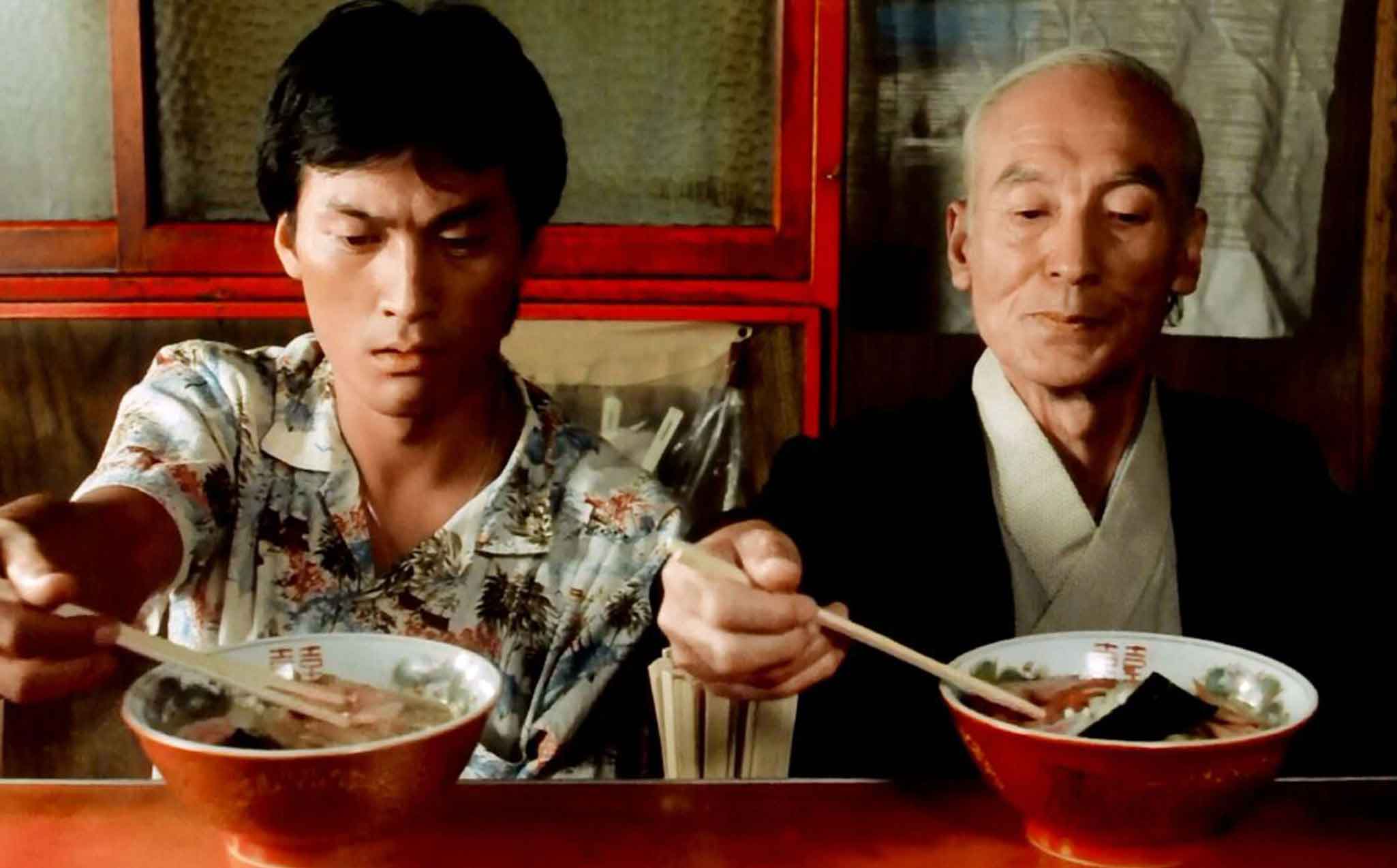Tampopo
Tampopo : Movie Review
4 stars out of 5 (Excellent)
Director : Juzo Itami
Japanese (English subtitles available), 1985
Japanese cuisine is one of the world's most remarkable, combining simplicity, elegance and depth in a beguiling blend. The fifth taste "umami", an enigmatic concept, is ascribed to this genre of cooking. High-end reverently prepared Japanese food has its worshippers the world-over, the soaring price-tags notwithstanding. Rice is the staple and noodles often pitch in as the main carbohydrate. Seafood (sushi!, sashimi! tempura! ) and meat supply the sex appeal. So it is not surprising that this cuisine-loving cine-oriented country would come up a tribute like Tampopo (1985) - spiked with dollops of humour and garnished with gobbets of social comment.
Tampopo (Dandelion) is about native food, the devotion in its preparation and rapture in its consumption; its syncytium with society ,of its primacy as well as higher joys. Juzo Itami - a man with an interesting life which was coerced into a ghastly end - is the writer and director of this movie. He cooks up a very appetizing, inventive story, its design comprising a main story track punctuated by assorted vignettes. This offering (which has versions with English subtitles) will hold more appeal to those who can tolerate an episodic often digressive structure, and of course it will have a bigger attraction to those who recognize the value of carefully prepared food. Since I subscribe to both the afore-mentioned categories I was quite susceptible to the charms of this inveigling enterprise.
Please note - The third last paragraph of this review, pertaining to the finale, contains what can qualify as a mini-spoiler- the liberty of including it was taken as this sequence deserves special comment. You may skip reading this if you intend to watch the movie.
In the central story-line a female cook (played by Nobuko Miyamoto) gets intensive training to dish out the tastiest and most balanced noodle soup ("ramen") that she can put together. In this lofty mission she pleads for the guidance of a truck-driver (Tsutomu Yamazaki) who agrees to coach her. In the process, he enlists the help of multiple masters, with or without their consent. Nothing short of assisuous perspicacity will suffice as the budding top-chef is put to the grind. Repeated failures are not an excuse to quit. Help also gradually comes up for the purpose of sprucing up her food joint - a type of restaurant where the customers are seated just across the counter from the chef and prep-station. Regarding the minor story of her son, it is good fun to see how the boy learns to tackle his problems.
The first food-related scene in the movie shows an elderly ordinary-looking Guru teaching a younger man the nuanced art of how to consume ramen. A bowl of noodle soup with meat and veggies is featured. I watched this sequence, fascination intensifying by the moment, as the steps are laid clear. Apparently one of the starting points in this pleasurable procedure is the appreciation of the bowl’s "gestalt" - this is the first and only time I have heard this word in a movie. In another scene. a young gangster and his beautiful lover show how to achieve a fusion of food, fun and foreplay. Their stunt involving a an egg-yolk is difficult no doubt - but its appeal was a bit lost on me. Their rain-drenched final conversation later in the movie, however, is worth hearty chuckles.
What transpires in a French restaurant’s private dining-room filled with Japanese businessmen is tres hilarious, superbly scripted and an adroit mock at blind cultural conformity (In technology and research however, these people abandon all norms and insist on pushing the envelope!). The vignette of the ailing mother will strike a chord with many - it is as much a riff on the power of routine as it is a touching comment on a mother’s eternal capacity to provide sustenance.
Unfortunately the movie also accomodates some unwitting gristle. A fist-fight between two men does not come off as a good scripting choice. A "group song of the poor" is material that cries out to be chopped from the final cut. On the "tasting" side, I liked the part which shows how to prepare a fluffy omelette in the shape of a gibbous moon. But I cringed when its umami was compromized by a tomato sauce layered down its middle (okay, it was shown to be prepared for a kid!).
The film’s last shot shows a scene of breast feeding. This is the movie’s most audacious sequence. It is also persuasively aesthetic. What helps is that the features of the lady and child are quite photogenic! The shot advances from a medium-length capture, moves in to exclude the lady’s face and focuses on the breast at which the infant in blissful rhythm is feeding away to glory.This scene in its beauty is simple, tender, elemental.
Indubitably, 'Tampopo' is imaginative and eclectic enough, nevertheless at the end of it, I wanted it to be even more umami-rich - a luscious feast; a sumptuous banquet. Probably the roving lens could have focused on a picture of the ancient times and then zoomed into that past zeitgeist to fish out some delicious scenes from the days of yore. A strong flavour of moving emotion might have been sauteed and infused into the central storyline.
In thinking of the best cuisine-centric films one is reminded of the perfection of Ratatouille - that wonderful masterpiece that synthesized and blended the choicest ingredients in a most satisfying fashion. Tampopo is not far behind. It has its own delights and unique ideas. This is one deliciously elaborate degustation menu that had me asking for more!
UPN
UPNWORLD welcomes your comments










0 COMMENTS
WRITE COMMENT